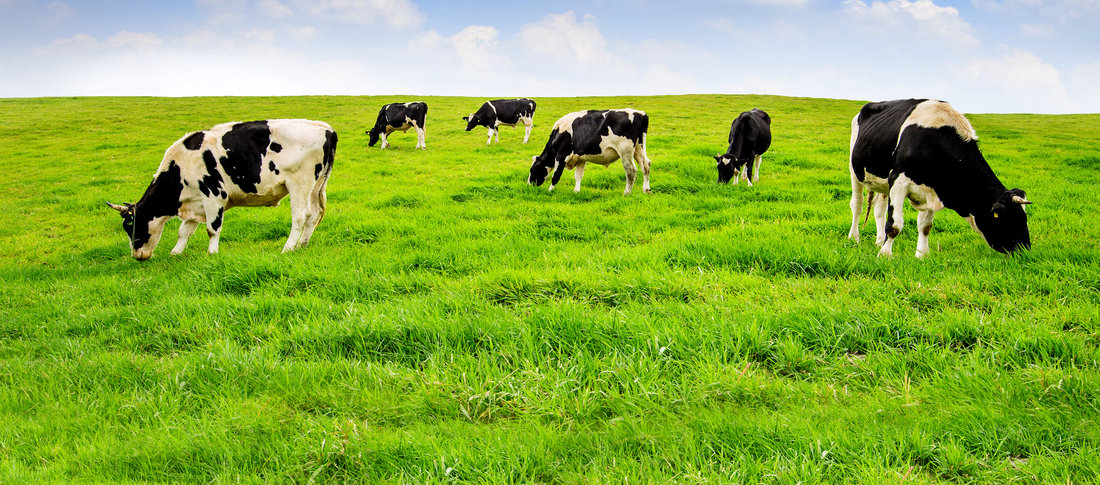Why feed fats?
We humans have given fat a terrible reputation. But it’s important to remember that your herd cannot live without it. The bottom line is that fat can help to enhance the profit margins of your business as well as the wellbeing of your herd. It’s an essential nutrient that supports all kinds of biological functions - from fertilisation to milk production.
Unrivaled energy supply for milk production - Fat has the highest energy density of any nutrient, with around 2.5-times the energy concentration of cereals. That makes it a particularly valuable resource when a cow’s demand for energy is high. For instance, dairy cows require lots of energy to maintain profitable milk yields. Dietary fat is an incredibly efficient way to meet those enhanced energy demands.
>> How to maintain your dairy herd’s body condition score
Improved fertility - Did you know fertility falls by around 10% for every 0.5 unit loss in body condition score? The high energy density of fat makes fat with a particular fatty acid profile a key nutrient in helping to restore a healthy body condition. Certain fats are also known to increase progesterone – a hormone that plays an important role in maintaining fertilisation and pregnancy. Some fat sources have even been proven to increase the quality of eggs at ovulation.
Immunity-boosting EFAs - Omega-3 and omega-6 are essential fatty acids (EFAs) that are bursting with health benefits. Omega-6 stimulates the immune system, helping to protect your herd from viruses and diseases. Omega-3 meanwhile has anti-inflammatory qualities and promotes infection-fighting components of immunity.
Reduction of heat stress - As cows turn food into energy, they produce heat internally. In hot weather, this can lead to an uncomfortable condition known as heat stress. Fat generates considerably less heat than all other energy sources, providing a nutrition-based defense against heat stress.
How much fat to feed?
As a guideline, 15-20% of the metabolisable energy in a dairy cow’s diet should come from fat. Basal forage concentrate rations will typically supply around 3-3.5% fat in the dry matter, though high-yielding dairy cows may require up to 8% fat in the dry matter. A general rule of thumb for dairy cows is that the amount of fat to feed should equal the amount of fat the cow produces in her milk (at equal body condition).
But beware.
An excess of free oil in the rumen creates a ‘slick’ that coats feed particles and prevents rumen bacteria from breaking down the feed - slowing digestion, reducing feed efficiency and rumen function.
Feeding anything over 3-3.5% fat in the dry matter can be detrimental to a cow’s digestive system as well as your profits unless included in a rumen-protected form. >> How to maintain a healthy rumen in dairy cattle
How can you use fat to maximise your profits?
Naturally, you want to protect - and increase - your profit margins as a dairy farmer. Understanding the nutritional benefits of fats will help to make that ambition a reality. But to get the best results it’s essential to implement the right fats, at the right time and in the safest way possible.
The easiest way to do that is to augment your regular feeding plans with special rumen-protected fat supplements. Unlike fats in standard feed ingredients, rumen-protected fats have no detrimental impact on regular rumen or digestive function, protecting the productivity of your herd.
Volac Wilmar has a range of uniquely-formulated rumen-protected fat supplements. They are nutritional powerhouses and contain high concentrations of important fatty acids such as oleic acid, palmitic acid and linolenic acid. Used correctly they can bring multiple, research-backed benefits to your herd, such as:
- improved milk production
- enhanced fat percentage of milk
- better fertility
Over to you...
To find the best rumen-protected fat supplements for your herd, make your first stop www.megalac.com. When it comes to profit-boosting fat supplements, we’ve got nutrition in the bag.
